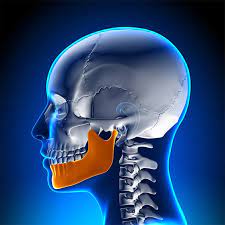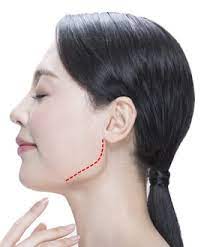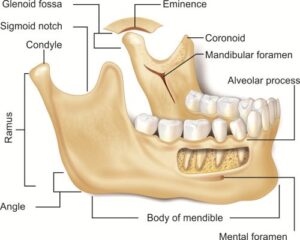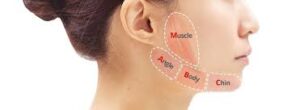

The dowager’s hump, commonly referred to as hyperkyphosis, is a physical condition that occurs when the upper back excessively curves forward.
Though it is often associated with aging and poor posture, this hump can have far-reaching consequences for more than just your spine and neck.
Surprisingly, one of the most overlooked effects is the harm it causes to your mandible—yes, your jawbone!
If you have ever wondered how this hump impacts your mandible and why it matters, you are in for an eye-opener.
In this article, we will explore how to fix nerd neck and how the dowager’s hump affects your mandible in intricate detail, drawing from scientific evidence to reveal why this seemingly “back-centric” issue is also a threat to your jaw health.
Points Covered in this Article:
- Understanding the Mandible: A Quick Overview
- What is a Dowager’s Hump and How Does It Develop?
- The Connection Between Dowager’s Hump and Mandible Position
- How Dowager’s Hump Alters Your Mandible Alignment
- Harmful Consequences of Dowager’s Hump on the Mandible
- Real-life Examples of Mandible Damage Due to Dowager’s Hump
- Conclusion: How Dowager’s Hump Harms Your Mandible?
Understanding the Mandible: A Quick Overview
Before we dive into how the dowager’s hump can harm your mandible, let’s first take a quick look at what the mandible actually is.
The mandible, commonly known as the lower jaw or lower mandible, is the largest and strongest bone in your face.
It holds your lower teeth in place and plays a crucial role in speech, chewing, and facial structure. The human mandible bone connects to the skull via the temporomandibular joint (TMJ), allowing for the movement necessary to open and close your mouth.
For the purpose of this article, we shall be focusing exclusively on how the dowager’s hump harms the mandible itself, such as the prognathic mandible (forward-projecting jaw), retruded mandible (recessed jaw), and other aspects of lower mandible anatomy.
What is a Dowager’s Hump and How Does It Develop?
A dowager’s hump, medically known as hyperkyphosis, is an excessive forward curvature of the upper spine.
While it is commonly associated with older adults, particularly postmenopausal women due to osteoporosis, it is increasingly observed in younger individuals.
Factors such as prolonged poor posture from desk work or excessive device use contribute to its development.
According to Cleveland Clinic, poor spinal alignment over time can lead to permanent postural changes if not addressed early.
Key Factors Contributing to Dowager’s Hump
Poor posture – Habitual slouching or leaning forward, especially during activities like texting or computer use, leads to muscle imbalances. Weak upper back and neck muscles, combined with tight chest muscles, promote the forward curvature characteristic of a dowager’s hump. As per Cleveland Clinic, prolonged poor posture is a major factor in the development of this condition.
Osteoporosis – This condition weakens the vertebrae, making them more susceptible to compression fractures. Such fractures can cause the spine to curve forward excessively, contributing to the hump. Women, particularly postmenopausal, are at higher risk due to decreased bone density, as highlighted by Cleveland Clinic.
Age-related degeneration – Natural aging processes lead to degenerative changes in the spine, such as disc degeneration and decreased muscle strength, which may result in hyperkyphosis.
Impact on the Jaw and Overall Health
The pronounced curvature forces the head to tilt downward and the shoulders to slump forward, altering the alignment of the head and neck.
Your military neck can strain the temporomandibular joint (TMJ), leading to jaw discomfort or pain.
Additionally, the altered posture can cause headaches, neck pain, and reduced range of motion.
According to Synappse Health, prolonged forward head posture associated with dowager’s hump can also lead to breathing difficulties and muscle fatigue.
Preventive Measures and Management
Postural awareness – Regularly monitor and correct posture during daily activities. Ensuring that workstations are ergonomically designed can help maintain proper alignment.
Strengthening exercises – Engaging in exercises that target the upper back and neck muscles can improve posture. Chin tucks, scapular squeezes, and doorway pectoral stretches are effective in reducing the curvature, as suggested by Cleveland Clinic.
Bone health maintenance – Adequate calcium and vitamin D intake, along with weight-bearing exercises, can help maintain bone density and reduce the risk of osteoporosis-related complications.
Early intervention is crucial to prevent the progression of a dowager’s hump.
By addressing posture habits and incorporating targeted exercises, individuals can improve spinal alignment and reduce associated discomfort.
The Connection Between Dowager’s Hump and Mandible Position
The dowager’s hump not only causes postural misalignment in the neck and spine but also directly impacts the mandible’s position.
Imagine this: the head is positioned forward, out of alignment with the spine, which creates a domino effect on the entire musculoskeletal system. Your head’s forward positioning forces your lower mandible to shift from its natural alignment.
In essence, when the spine is out of alignment, the muscles responsible for stabilizing the human mandible bone are strained.
This strain pulls the mandible either forward or backward, leading to issues like a prognathic mandible (where the jaw juts forward) or a retruded mandible (where the jaw recedes).
Neither of these conditions is ideal for chewing, talking, or overall dental health, as misalignment can cause severe wear and tear on the joints and bones of the jaw.
How Dowager’s Hump Alters Your Mandible Alignment?
When the dowager’s hump alters the alignment of the upper spine, it shifts your entire head forward. This unnatural posture forces your mandible to compensate for the forward head tilt.
According to a study published in the “Journal of Oral Rehabilitation,” the position of the head directly influences the orientation of the jaw. When the neck and upper back are misaligned, as seen in those with a dowager’s hump, the mandible shifts into a less efficient, often harmful position.
This is where the damage begins. Over time, the constant pressure on the temporomandibular joint (TMJ) leads to wear on the mandible bone and its associated joints. The continuous stress can cause chronic jaw pain, clicking, and even TMJ disorders.
Furthermore, this altered alignment can increase the likelihood of developing a misaligned bite, tooth wear, or even conditions like bruxism (teeth grinding).
Harmful Consequences of Dowager’s Hump on the Mandible
So, what are the actual consequences of the dowager’s hump on your mandible?
Here are the key ways in which the dowager’s hump damages your jaw:
- Mandibular Misalignment: When the upper spine and neck are out of alignment, your lower mandible bone struggles to maintain its proper position. A forward or retruded mandible is likely, affecting your bite and chewing function.
- Temporomandibular Joint Strain: With your head constantly tilted forward, your TMJ undergoes continuous pressure. Over time, this can result in inflammation, joint pain, and reduced mobility in the mandible.
- Jaw Muscle Overcompensation: The muscles responsible for moving the human mandible are constantly working overtime to keep your jaw functional despite the poor alignment. This leads to muscle fatigue, spasms, and even chronic jaw pain.
- Bone Degradation: Over time, the stress on the left mandible or the right side (depending on the individual’s postural tilt) causes uneven wear on the mandible bone itself, leading to potential degradation.
Real-life Examples of Mandible Damage Due to Dowager’s Hump
Now, let’s look at how this manifests in daily life.
- The Office Worker: Consider someone who spends 8-10 hours a day at a desk, constantly hunching over a computer. As the dowager’s hump develops, their head moves forward, pushing their mandible into an awkward, retracted position. Over time, this misalignment leads to difficulties in chewing, a noticeable jaw ache, and even misaligned teeth.
- The Phone Addict: Another example could be someone who is frequently using their phone, often looking down at the phone screen. This repetitive action strengthens the curvature of the upper back while pulling the lower jaw forward into a prognathic position. This can lead to long-term problems like uneven tooth wear and TMJ pain.
How Dowager’s Hump Harms Your Mandible?
So, how exactly does a dowager’s hump harm your mandible?
In summary, the dowager’s hump forces the head to tilt forward, disrupting the natural alignment of the human mandible bone.
This altered positioning creates unnecessary strain on the temporomandibular joint and muscles, leading to long-term consequences like jaw pain, muscle fatigue, and even bone degradation.
The key takeaway here is that poor posture does not just impact your spine and neck; it can have profound effects on your jaw as well.
When your posture is compromised, your lower mandible anatomy suffers from misalignment, leading to painful and long-term dental and skeletal problems.
To combat this, addressing postural issues early is essential.
By working on improving your posture, you can protect not just your back but your mandible as well, ensuring a healthier jaw and preventing issues like TMJ disorders, muscle strain, and tooth misalignment.
References:


